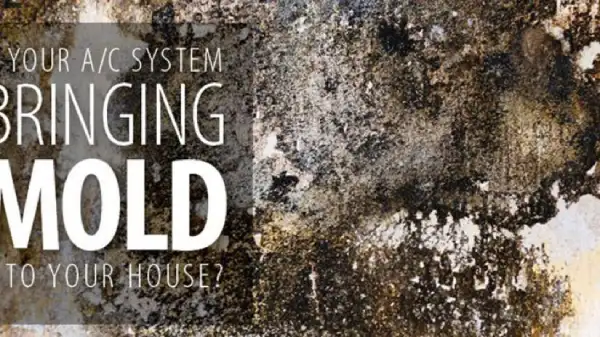
Rainbow Restoration highlights the risks of mold growth linked to air conditioning systems and offers guidance for prevention.
|
Plenty of pollutants threaten to destroy your indoor air quality, including mold. Overexposure to mold can trigger allergic reactions, including wheezing, coughing, itchy and watery eyes, runny nose, and rash. Anyone with asthma is also likely to experience worsened symptoms of this condition.
Many homes rely on air conditioning to stay cool in the summer. The problem is that this equipment can harbor mold growth or spread spores from one part of the home to another. To protect you and your family from the negative health effects of mold, you should pursue air conditioning services to have this contaminant removed.
How the Air Conditioner Introduces Mold to Your Home
Summer is the time of year for high humidity. One of your air conditioner's tasks, in addition to cooling the air, is to remove excess humidity. Water vapor condenses on the evaporator coil and drips into the condensate pan. From here, the water drains away so it can't simply evaporate back into the indoor air.
Any problem with the condensate pan or drain can lead to mold growth in these areas. Excess moisture within the ducts themselves – which can be caused by low refrigerant that allows the evaporator coil to freeze over – can also allow mold to grow here. Mold is most likely to grow inside your air conditioner if you live in an especially humid climate.
How the Air Conditioner Spreads Mold Around Your Home
Spores like to settle and grow on habitually damp surfaces. This fact makes bathrooms and basements common trouble areas for mold growth. Since every room in your home is linked by return and supply registers, mold spores lingering in one place can be transported to another through the ductwork. If the blower turns off while spores are traveling through the ducts, they can settle on the walls and start to grow there if enough moisture and organic material is present.
Check Your Air Conditioner for Mold Growth
The first indicators that mold is growing somewhere in your home include a musty odor and unexplained allergy symptoms that dissipate when you leave the house. If you can't spot visible signs of mold, it's very possible spores have set up shop in your air conditioner or ductwork.
The best way to check your ducts for mold is to hire a certified mold remediation company. Remember, some materials simply look like mold without delivering the same health problems, so hiring a pro is the best option for accurately pinpointing the problem.
Prevent Mold Growth
The best way to prevent mold growth on any surface is to control moisture and the presence of organic material. To control moisture in your home and make dehumidification easier for your air conditioner:
- Run the bathroom and kitchen exhaust fans when you shower and cook.
- Run the dishwasher during cooler times of the day.
- Cook with lids on your pots and pans.
- Run an independent whole-house dehumidifier.
To control organic material, have your ductwork cleaned so mold has less dust and debris to feed on.
Remove Mold with Professional Services
If you suspect mold is growing in your ductwork, the EPA advises you to contact a professional before you run the air conditioner again to prevent spores from spreading. Mold in hard-to-reach places can be difficult to remove, but Rainbow Restoration® has the knowledge, experience, and equipment to thoroughly and safely remove mold from your air conditioner. Then, we address the underlying problem to prevent mold growth from recurring.
To learn more about our air conditioning services, or to schedule mold cleanup, please contact Rainbow Restoration today.
For Further Reading:
